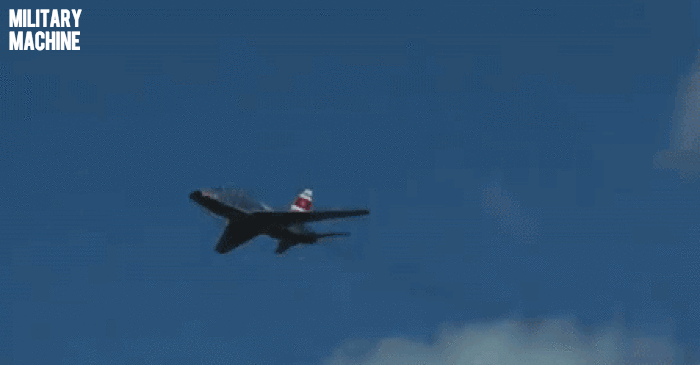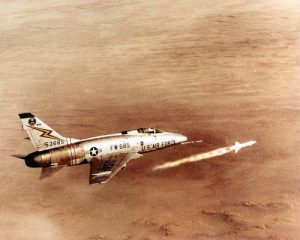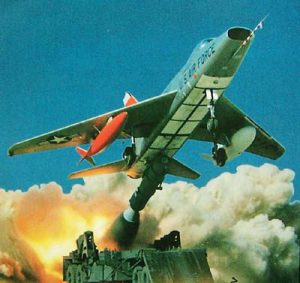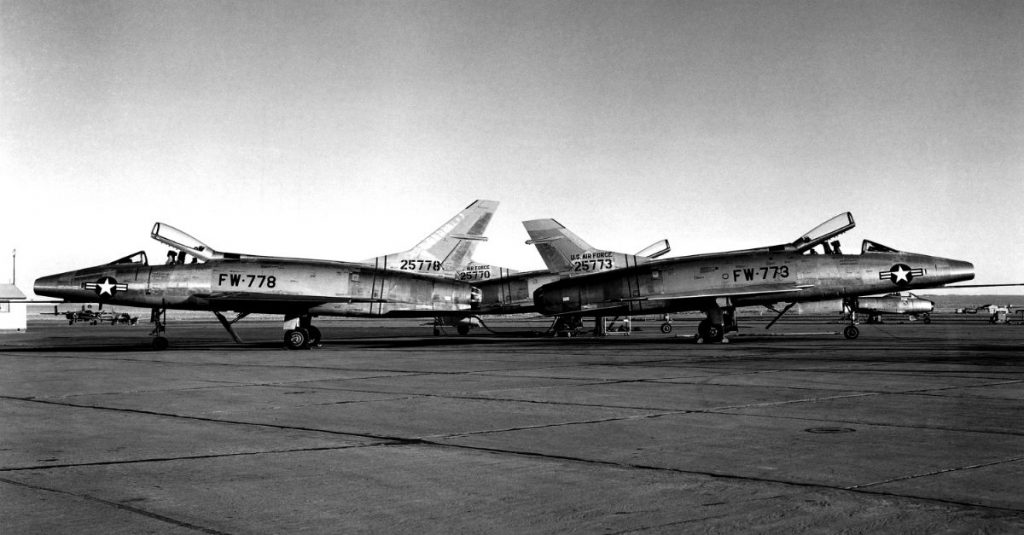The F-100 Super Sabre Fighter-Bomber
One of the first in many generation of American fighter-bomber jets, the North American F-100 Super Sabre was a single engine aircraft extensively used from 1954 to 1971 by the United States Air Force. The Super Sabre was the first American fighter jet to reach and exceed subsonic speeds, eventually reaching supersonic speeds by its last iteration.
Multirole Platform:
In combat operations, it could serve as either fighter escort or bomber. Notable roles during conflict periods also include forward air control (FAC) and striking extremely dangerous enemy anti-aircraft defenses. It was retired from active duty in the United States Air Force in 1971 after a record career of no losses to enemy fighter aircraft.
 The very name, F-100, gave rise to its most common moniker as the “Hun” but it quickly became apparent that this aircraft closely resembled it. Fast, dangerous, and unrivaled in the skies, the F-100 Super Sabre was utterly efficient in close air-to-air combat. Equipped with 20mm cannons and heat-seeking sidewinders, the Super Sabre was designed to close with its contemporary MiG counterparts and maneuver its way to victory.
The very name, F-100, gave rise to its most common moniker as the “Hun” but it quickly became apparent that this aircraft closely resembled it. Fast, dangerous, and unrivaled in the skies, the F-100 Super Sabre was utterly efficient in close air-to-air combat. Equipped with 20mm cannons and heat-seeking sidewinders, the Super Sabre was designed to close with its contemporary MiG counterparts and maneuver its way to victory.

Combat Service:
Over the course of the entire Vietnam War, the F-100 would never see a single loss due to air-to-air combat. Unfortunately, no aircraft during the Vietnam war would prove too stalwart against anti-aircraft ground fire. By the end of the F-100 Super Sabre’s role in Vietnam, 186 aircraft were lost almost exclusively to surface-to-air anti-aircraft fire. The only known air-to-air conflict arose towards the end of its tour in Vietnam. Two F-100s were escorting two F-105 Thunderchiefs when they encountered four North Vietnamese MiG-17s. The Thunderchiefs were assigned to the bombing run and the Super Sabres to escort. While accounts from a MiG-17 pilot after the war confirmed that three of his mates were shot down, the US Air Force never officially credited the F-100 Super Saber pilots with an air victory.

Changing Roles:
This came as a bitter disappointment to the F-100 fleet pilots who spent a very long time deployed to bomber escort runs during the conflict. Since 1964, F-100s were used extensively as close air support for ground troops and only briefly striking targets north of the 17th parallel. Their losses were extensive, as were many fighter-bombers. For an aircraft that was almost exclusively designed for speed and air-to-air combat, the F-100 was used in a single capacity to which it faced a great deal more peril: ground fire.
Super Sabre Was Also A Super Spy:
Amongst the roles that the F-100 also played in other arenas, it served as a reconnaissance jet over Soviet-allied territory. This was well before the days of satellite imagery. If strategic planning wanted ground intel, it needed to send a jet. The faster, the better. And in 1955 through 1957, that’s precisely what an augmented F-100 did. Because of the F-100 Super Sabre’s speed and high service ceiling, it evaded interception every single time.

The last F-100 formally retired from the Air National Guard in the early 1980s. Foreign air forces throughout the world continued use until the last one retired in 1988.
Powerplant:
The last iteration of the F-100 Super Sabre, the F-100D, was powered by a single Pratt & Whitney J57-P-21/21A turbojet. It could produce up to 10,200 lb-ft (45 kN) of dry thrust or 16,000 lb-ft (71 kN) with afterburner.
See F-100 Super Sabre Specifications
| Height: 16 feet 2 inches (4.95 m) |
| Length: 50 feet (15.2 m) |
| Wingspan: 38 feet 9 in (11.81 m) |
| Empty Weight: 21,000 lbs. (9,500 kg) |
| Max. Takeoff Weight: 34,832 lbs. (15,800 kg) |
| Maximum Speed: 864 mph (750 kn, 1,390 km/h, Mach 1.3) |
| Range: 1,995 mi (1,733 nm, 3,210 km) |
| Service Ceiling: 50,000 feet (15,000 m) |
| Crew: 1 |

